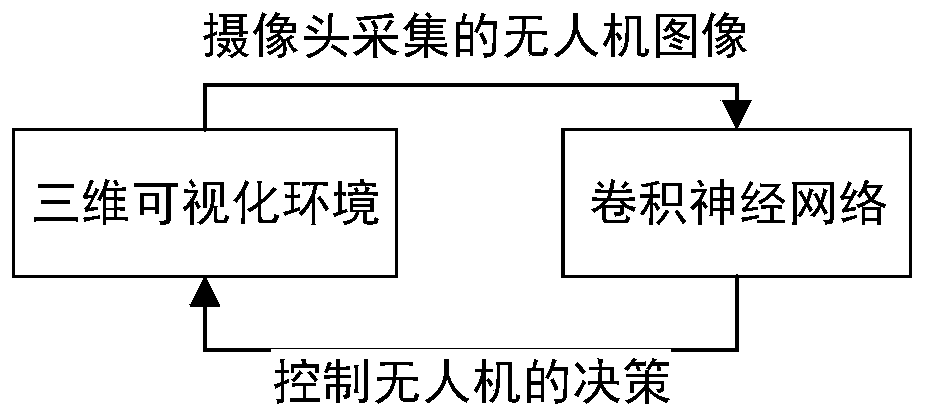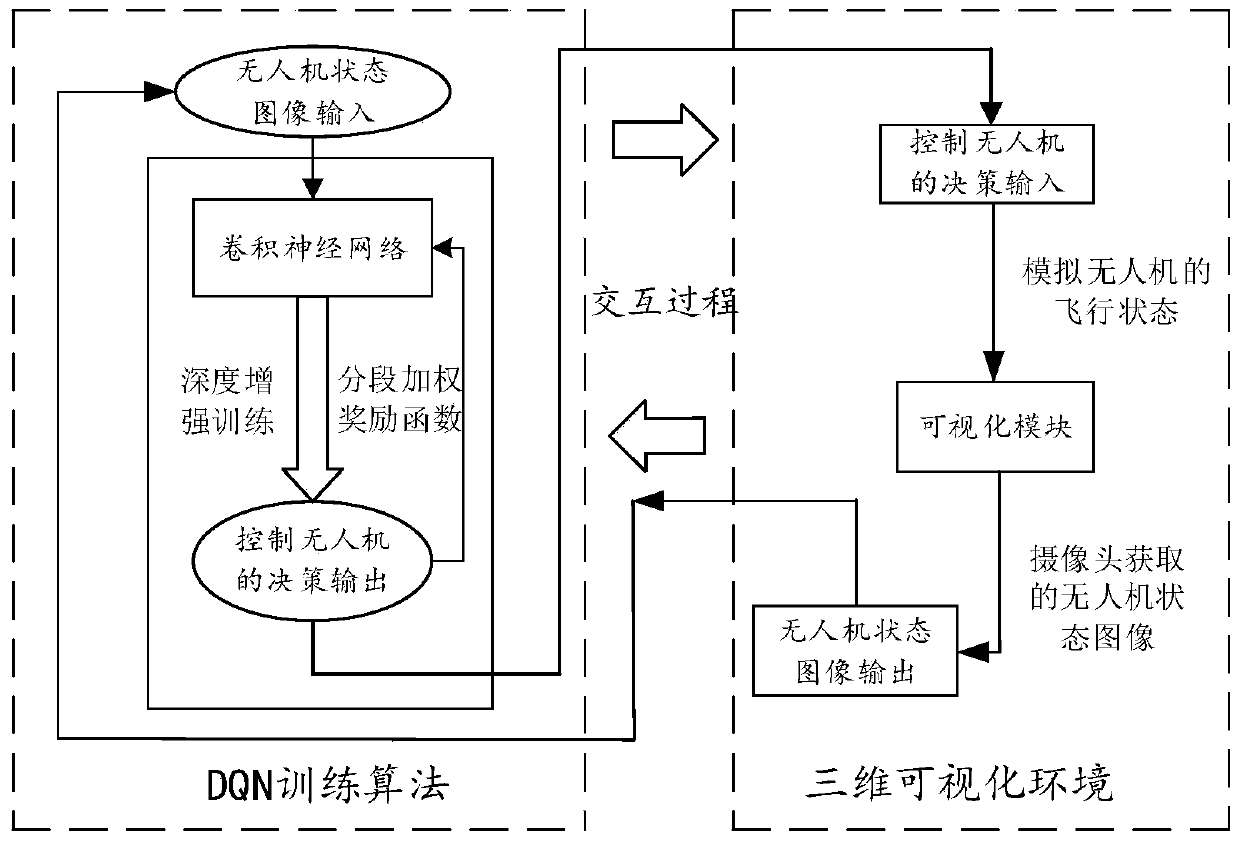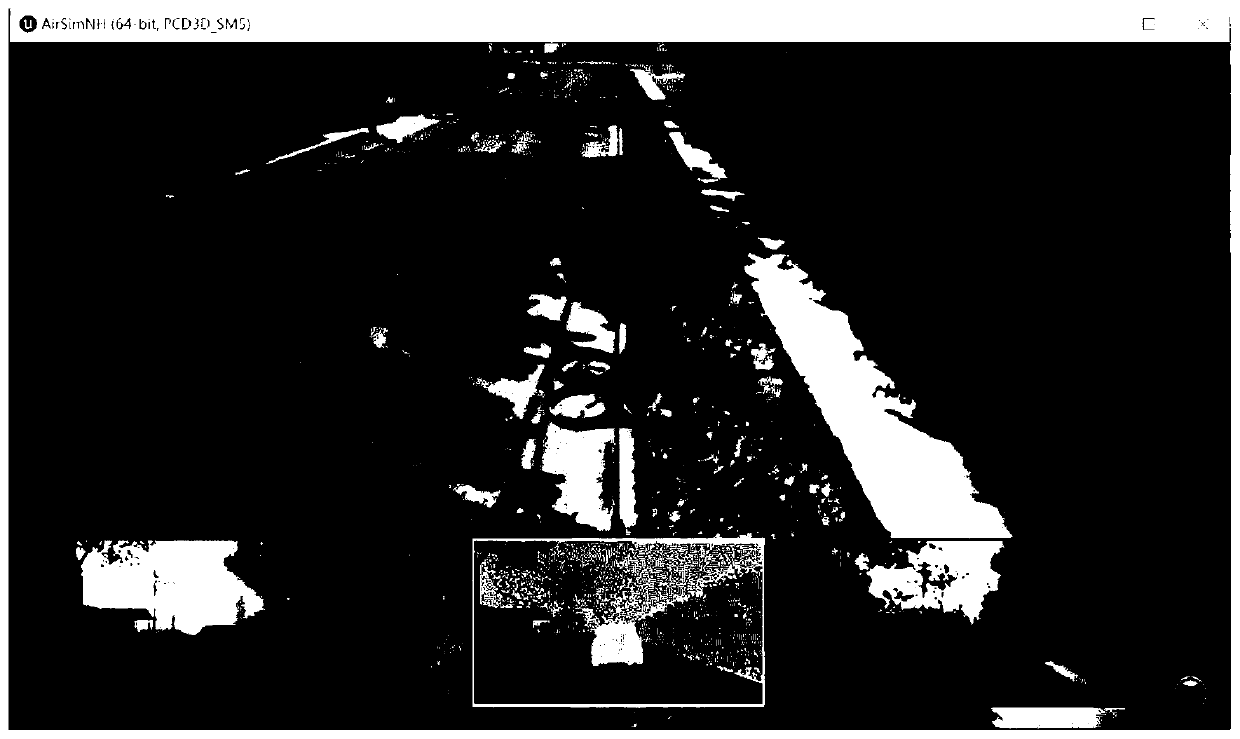Intelligent obstacle avoidance method for unmanned aerial vehicle based on autonomous learning
A self-learning, unmanned aerial vehicle technology, applied to mechanical equipment, combustion engines, internal combustion piston engines, etc., can solve problems such as poor robustness, difficulty in clearing obstacle boundaries, and lack of decision-making ability
- Summary
- Abstract
- Description
- Claims
- Application Information
AI Technical Summary
Problems solved by technology
Method used
Image
Examples
Embodiment
[0095] In the simulation environment of a village area, there are two obstacles with a height of about 1 meter 6 and a width of about 2 meters—two cars. After the drone takes off, it hovers at a height of about 1 meter 2 above the ground, and starts after stabilization. Fly forward at a constant speed. When approaching an obstacle, it starts to rise to a maximum of 2 meters to avoid obstacles. After flying over the obstacle, it drops to about 1 meter 2 and continues to fly forward until it reaches the end point.
[0096] Each training randomly initializes the position of the UAV in the 3D simulation environment, and gives the UAV controlled by the agent enough time steps to cross the obstacle and reach the position of the farthest flight distance. Since the z-axis of the UAV is vertical to the ground downward, according to the simulation environment, set the flight height of the UAV to -0.65 and the maximum value of the flight distance D to 100. The UAV can follow the above dem...
PUM
 Login to View More
Login to View More Abstract
Description
Claims
Application Information
 Login to View More
Login to View More - R&D
- Intellectual Property
- Life Sciences
- Materials
- Tech Scout
- Unparalleled Data Quality
- Higher Quality Content
- 60% Fewer Hallucinations
Browse by: Latest US Patents, China's latest patents, Technical Efficacy Thesaurus, Application Domain, Technology Topic, Popular Technical Reports.
© 2025 PatSnap. All rights reserved.Legal|Privacy policy|Modern Slavery Act Transparency Statement|Sitemap|About US| Contact US: help@patsnap.com



